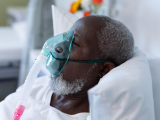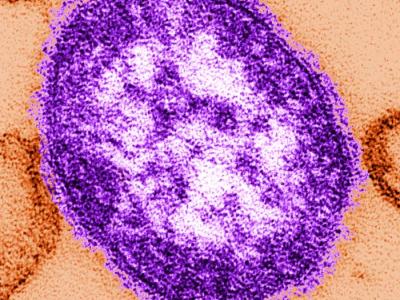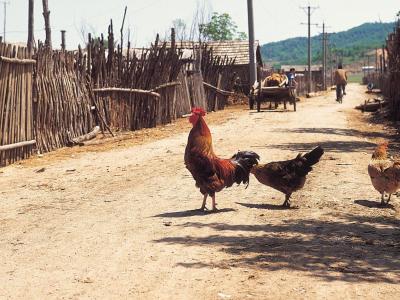A new analysis suggests that the Omicron variant has comparable intrinsic severity to the ancestral (Wuhan) SARS-CoV-2 strain, but its effective severity is substantially lower because of vaccination.
Large Omicron outbreak in immune-naïve population
For the first 2 years of the pandemic, Hong Kong was largely successful in suppressing mass infection with COVID-19. By the end of 2021, only 1% of the Hong Kong population had been infected with SARS-CoV-2, but 70% of the population aged 3 years or above had received at least two doses of vaccination.
In March 2022, however, 1.1 million cases of the virus were confirmed when the Omicron variant caused mass infection in a largely immune-naïve population.
To compare the severity between the Omicron and ancestral strains of the virus, researchers in Hong Kong looked at factors associated with mortality among hospitalized COVID-19 cases to quantify the overall patterns of COVID-19 severity. The study was today published in The Journal of Infectious Diseases.
Researchers with the Hospital Authority and Centre for Health Protection collected data on all lab-confirmed COVID-19 cases in Hong Kong from January 23, 2020, to October 26, 2022.
Until February 14, 2022, all COVID-19 case-patients in Hong Kong were hospitalized regardless of disease severity, for isolation purposes. Following the arrival of the Omicron variant, only patients needing medical attention were hospitalized.
Severity was determined by looking at weekly case hospitalization risks (CHR) and hospitalization fatality risks (HFR).
"We estimated the CHR and HFR in time periods during which at least 35 confirmed cases and at least 15 confirmed hospitalized cases were reported per week in 4 or more consecutive weeks in order to provide effective comparisons between different epidemic waves avoiding large uncertainties from very small case numbers," the authors wrote.
Fatality rate doubled for hospitalized elderly
In total, 1,979, 22,805 and 7,438 COVID-19 patients were hospitalized for treatment in waves 1 through 4, wave 5 (Omicron) and wave 6 (Omicron BA.2 and BA.4/5 subvariants), respectively.
The estimated CHR decreased from 15.9% at the end of wave 3 to 10.5% at the end of wave 4. And the weekly HFR estimates similarly declined from 18.1% (95% confidence interval [CI], 9.2% to 27.1%) to 8.3% (95% CI, 3.0% to 13.5%) during the same period.
In the Omicron-dominant waves 5 and 6, CHR estimates were low (around 0.7%) while the HFR estimates increased from 3.4% (95% CI, 0.0% to 7.7%) in late January 2022 and peaked at 41.3% (95% CI, 37.9% to 44.8%) in early March of 2022 before declining to 12.2% (95% CI, 7.9% to 16.4%) by the end of October 2022.
In waves 5 and 6, people ages 65 and older were the most likely to be hospitalized for infections. The fatality rate in wave 5 of hospitalized patients ages 65 years and older was more than double that of waves 1 to 4 (41.1% compared to 19.7%).
Vaccines protected against hospitalization, mortality
Case-patients with at least one dose of Pfizer-BioNTech or CoronaVac vaccine had significantly lower odds of mortality than unvaccinated patients, the authors said, with the lowest odds observed in people who had received three Pfizer doses (odds ratio, 0.31; 95% CI, 0.18 to 0.49).
The age-specific HFRs in our study indicated a much higher fatality risk in adult cases hospitalized in the epidemic wave of Omicron than earlier waves.
Surprisingly, there were no significant differences in fatality risk for hospitalized cases in wave 5 relative to those in waves 1 to 4 across all age-groups.
"The age-specific HFRs in our study indicated a much higher fatality risk in adult cases hospitalized in the epidemic wave of Omicron than earlier waves, different from previous studies showing reduction in disease severity," the authors said. "This likely resulted from a higher proportion of older adults infected in wave 5 within a short time period leading to less optimal clinical outcomes in patients with constrained healthcare capacity."
The authors said their findings highlight the importance of vaccination, and the protection offered by vaccines against severe outcomes from COVID-19 infections, given that intrinsic severity of new strains may be similar to the ancestral strain.




















